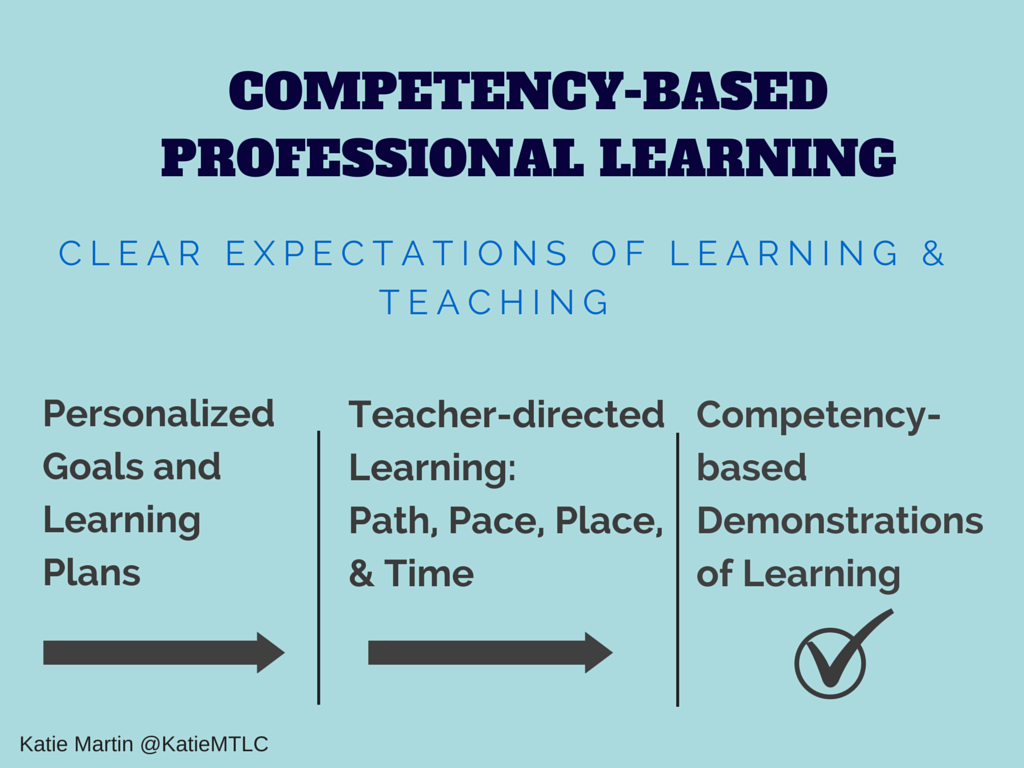Last week at ISTE there was noticeable attention paid to the fact that technology alone cannot transform the classroom. The importance of pedagogy and relationships to leverage the power of technology was a huge theme at the conference and it’s about time! Many have been saying this for some time now and others are finally jumping on board to move the masses.
The challenge, however, is the traditions that are so entrenched in our educational system that rely on experts to impart knowledge and teachers to acquire seat time or hours as evidence that they have been professionally developed. Then, of course, this same model is how many still “teach” students because it was how we “learned”. To move from awareness to action and begin to realize this change in learning experiences for students, we must shift for the learning experiences for educators.
Realizing professional learning needs to change is one thing but shifting a culture to make this systemic change is a challenge that plagues many schools and districts. Some common pitfalls in professional learning from my own experience and observations are:
- Lack of choice in learning
- Content Not at skill or knowledge level of learners
- Focus on new program or models rather than how a teachers will apply in own context
- Too much information to process in one sitting (and too much sitting)
- Lack of guidance to implement new learning in the classroom
- Lack of models of what this “new thing” could look like in a real classroom
- Expectations of immediate implementation
- No follow up learning or guidance on next steps from where the teacher is
- No relationships with the presenter or fellow learners
There is a great deal that educators need to learn to effectively connect the technological knowledge, content knowledge, and pedagogical knowledge or TPACK as defined by Mishra & Koehler and many of the current models aren’t supporting the diverse needs of all teachers.
As I work with educators and hear their needs, it is clear that a system that prioritizes learning and continuous growth through personalized, competency-based professional learning is needed. The following components are my thoughts on how to best empower and support teachers to achieve high expectations.

1. Clear expectations for learning and teaching- Based on a shared vision, determine what you want teachers to be able to know and do to create the desired learning experiences for students. Without a common understanding many people guess and the shared vision rarely materializes in the majority of classrooms.
2. Personalized goals and learning plans- Support teachers to self-assess their strengths and goals in respect to the desired learning environments in order to determine personal goals and craft a personalized learning plan based on the resources and support available.
3. Teacher-directed learning (path, time, place, and pace)- Teachers (like all other humans) have diverse expertise and preferences about how and what they learn. Provide clear learning goals but allow for choice and voice to empower teachers to learn in a way that suits their needs and builds on their strengths to develop and apply new knowledge.
4. Competency-based demonstrations of learning-To move from assessing professional development by the number of days or hours teachers have attended, prioritizing the application can help shift professional learning from something we do to educators to an improvement process that impacts learning for all.
To realize the vision of powerful learning accelerated by technology, systems that foster personalized, professional learning and robust support are necessary to fully integrate new learning into classrooms. Building and ecosystem that cultivates a culture of learning requires safe opportunities to practice, observations of models, time for reflection and revision, and capacity building collaboration. The power of professional learning comes from this continuous cycle that promotes and sustains new learning and innovation based on the needs and interests of the learners.


0 Comments